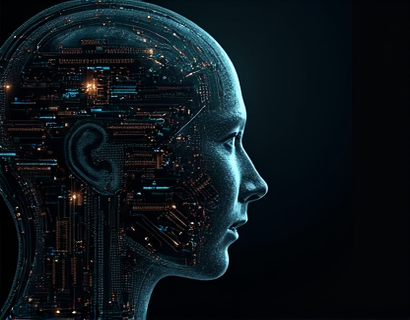Transforming User Engagement in the Digital Age: The Synergy of Crypto and AI
The intersection of cryptocurrency and artificial intelligence (AI) is revolutionizing the way users interact with digital platforms and applications. This synergy is not only enhancing user engagement but also driving innovation and growth in the tech industry. As technology continues to evolve, the integration of these two powerful forces is creating new opportunities for developers and users alike. This article explores the latest advancements in this field, highlighting how the combination of crypto and AI is transforming digital experiences and fostering meaningful connections.
The rise of blockchain technology has opened up a new paradigm for digital interactions. Cryptocurrencies, built on blockchain, offer a decentralized and secure way to conduct transactions, eliminating the need for intermediaries. This decentralized nature aligns perfectly with the principles of AI, which thrives on data and autonomy. When combined, these technologies can create more intuitive, secure, and personalized user experiences.
Enhanced Security through Cryptographic Techniques
One of the primary benefits of integrating AI with cryptocurrency is the enhancement of security measures. AI algorithms can analyze vast amounts of data to detect patterns and anomalies, which is crucial for identifying potential security threats. In the context of blockchain, AI can be used to monitor transactions in real-time, ensuring that any suspicious activity is flagged immediately. This proactive approach to security not only protects user data but also builds trust in the platform, a critical factor for user engagement.
Moreover, AI-driven cryptographic techniques are being developed to create more robust encryption methods. Traditional cryptographic algorithms can be vulnerable to attacks, but AI can help in designing algorithms that are adaptive and resilient. For instance, machine learning models can continuously learn from new attack patterns and update encryption protocols accordingly. This dynamic security approach ensures that user data remains safe, even as threats evolve.
Personalized User Experiences through AI
AI's ability to process and analyze large datasets makes it an ideal tool for personalization. In the realm of cryptocurrency and digital services, this means creating tailored experiences for each user. By leveraging AI, platforms can analyze user behavior, preferences, and historical data to offer customized recommendations and services. This level of personalization not only enhances user satisfaction but also increases engagement and retention.
For example, a digital wallet app powered by AI can learn a user's spending habits and suggest optimal times for transactions to minimize fees. It can also provide insights into market trends, helping users make informed investment decisions. Such personalized features not only improve the user experience but also encourage users to spend more time on the platform, fostering deeper engagement.
Smart Contracts and AI-Driven Automation
Smart contracts, self-executing contracts with the terms directly written into code, are a cornerstone of blockchain technology. When combined with AI, smart contracts can become even more powerful and efficient. AI can be used to automate the execution of smart contracts based on real-time data analysis, ensuring that conditions are met accurately and promptly. This automation reduces the need for manual intervention, speeds up processes, and minimizes the risk of errors.
For instance, in decentralized finance (DeFi) applications, AI can monitor market conditions and automatically execute trades or adjust positions within smart contracts. This level of automation not only streamlines operations but also provides users with a seamless and reliable experience. The combination of smart contracts and AI ensures that transactions are not only secure but also efficient, further enhancing user engagement.
Predictive Analytics and User Behavior Forecasting
AI's strength lies in its ability to predict future trends based on historical data. In the context of cryptocurrency and digital services, predictive analytics can be used to forecast user behavior and market trends. By analyzing patterns in user interactions and transaction data, AI models can predict which features or services are likely to gain popularity. This foresight allows platforms to proactively develop and implement new features that align with user needs and preferences.
Additionally, predictive analytics can help in identifying potential churn by detecting early signs of user disengagement. By analyzing behavior patterns, AI can alert platform administrators to take proactive measures, such as offering personalized incentives or support. This proactive approach not only retains users but also enhances their overall experience, leading to higher engagement levels.
Decentralized Identity Management
One of the significant challenges in the digital world is managing user identities securely and privately. The combination of cryptocurrency and AI offers a solution through decentralized identity management systems. These systems use blockchain to create unique, verifiable identities that users can control entirely. AI can enhance this process by managing and verifying identities in real-time, ensuring that only authorized users access specific services.
Decentralized identity management not only provides users with greater control over their personal data but also enhances security. AI can monitor and analyze identity-related data to detect and prevent fraudulent activities. This dual benefit of security and control is a major factor in increasing user trust and engagement with digital platforms.
Gamification and Incentive Mechanisms
Gamification, the use of game design elements in non-game contexts, has proven to be an effective way to increase user engagement. When combined with cryptocurrency and AI, gamification can be taken to new heights. AI can design dynamic and adaptive gamification strategies that evolve based on user behavior and preferences. For example, AI can create personalized challenges and rewards that keep users motivated and engaged.
Cryptocurrency adds an extra layer of incentive, as users can earn and trade digital tokens for completing tasks or achieving milestones. AI can optimize the distribution of these tokens, ensuring that rewards are both attractive and fair. This synergy between gamification, AI, and cryptocurrency creates a highly engaging and rewarding experience for users, driving sustained interaction with the platform.
Conclusion
The integration of cryptocurrency and AI is transforming user engagement in the digital age. From enhanced security and personalized experiences to smart contracts and decentralized identity management, the possibilities are vast. As technology continues to advance, the combination of these two powerful forces will likely lead to even more innovative solutions, further revolutionizing the way we interact with digital platforms. For those interested in the intersection of crypto and AI, this is an exciting time to explore and contribute to this rapidly evolving field.











































